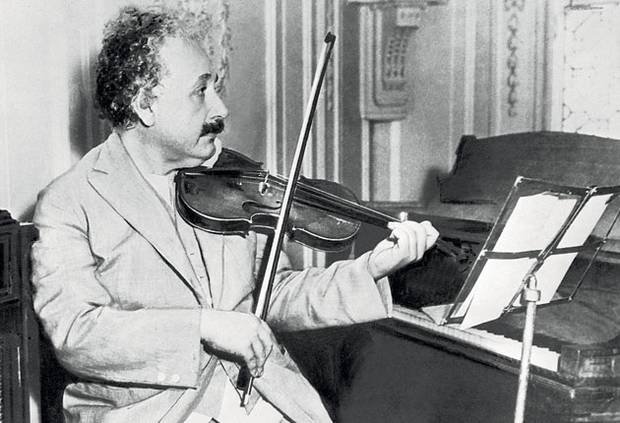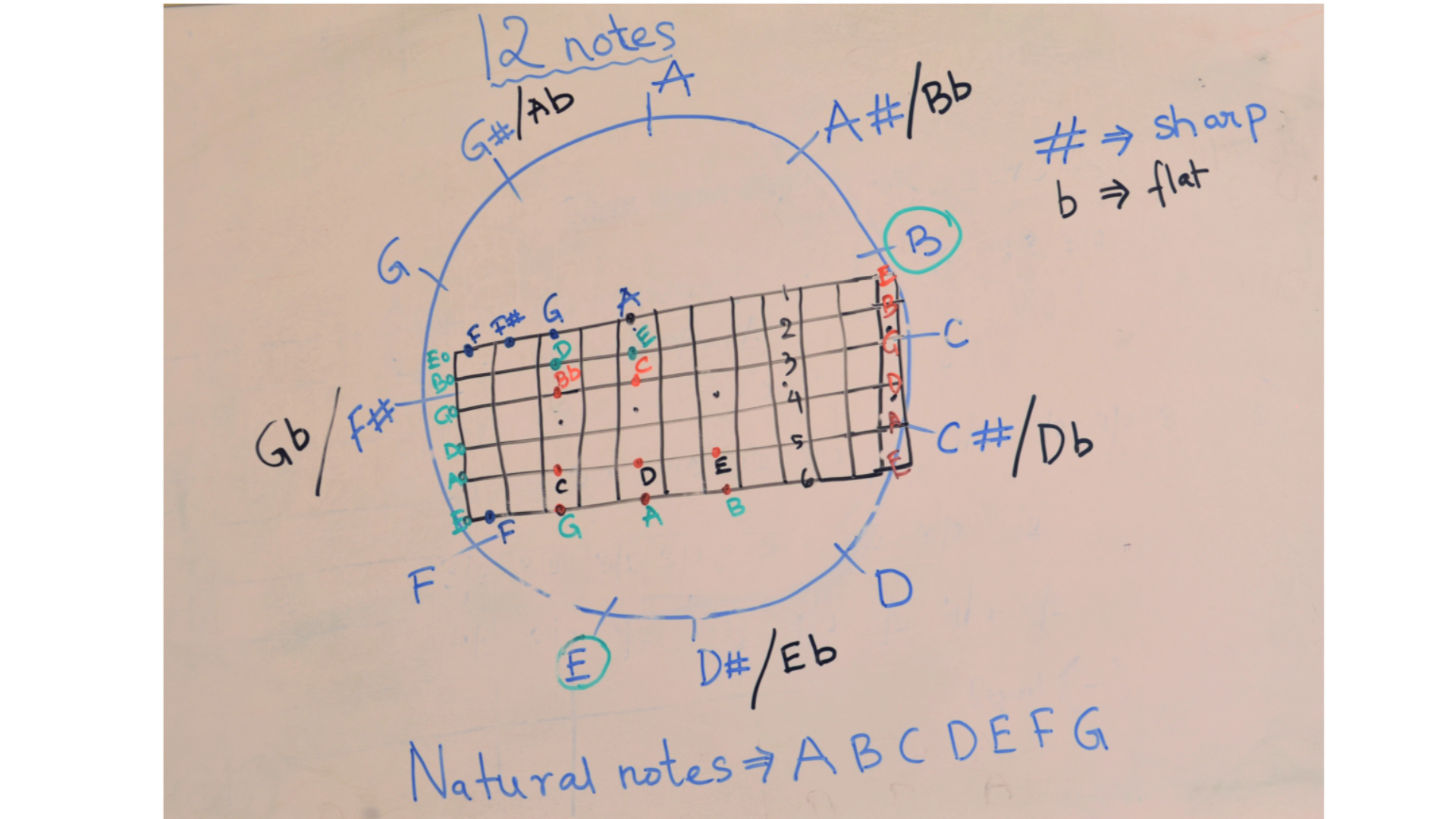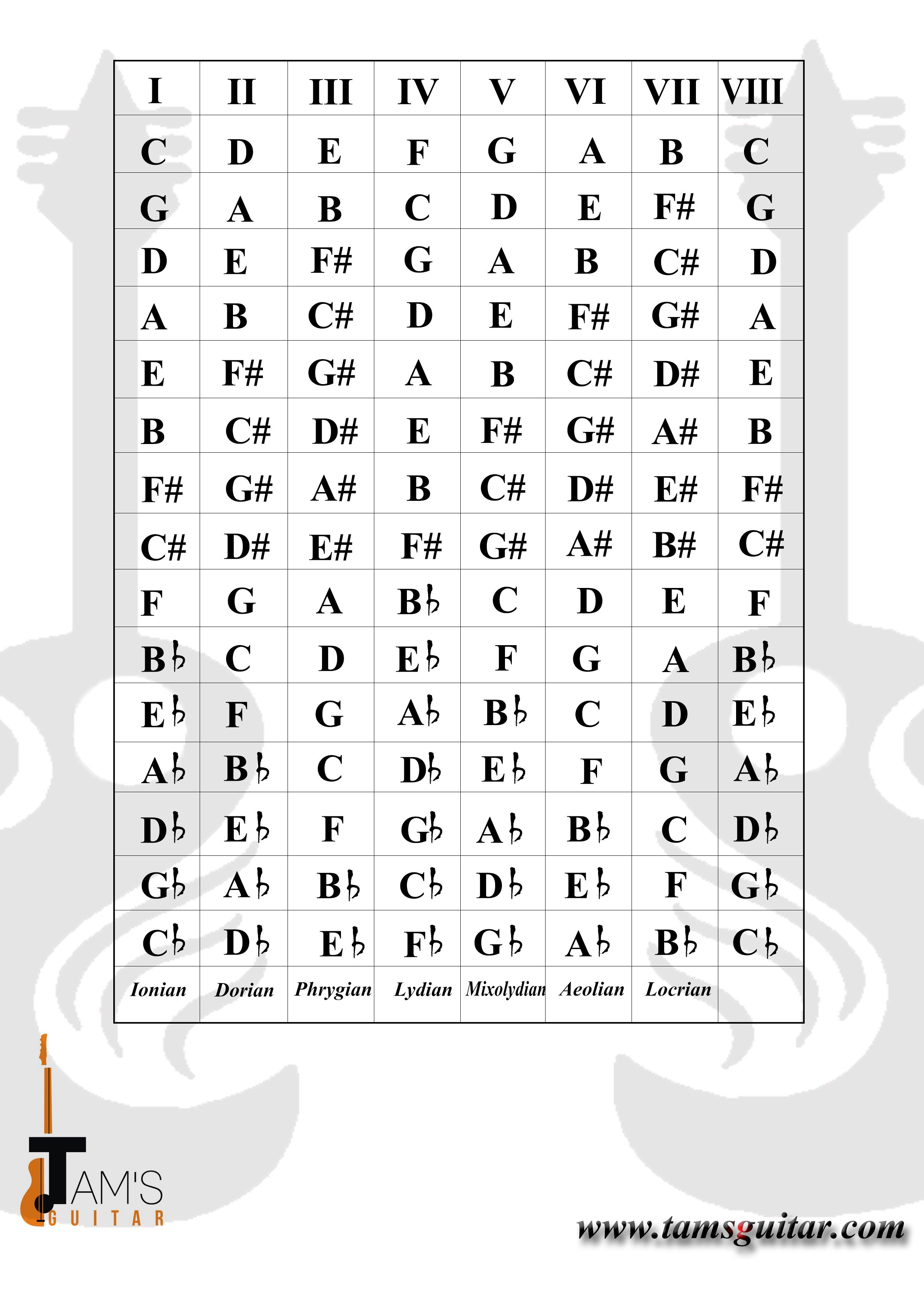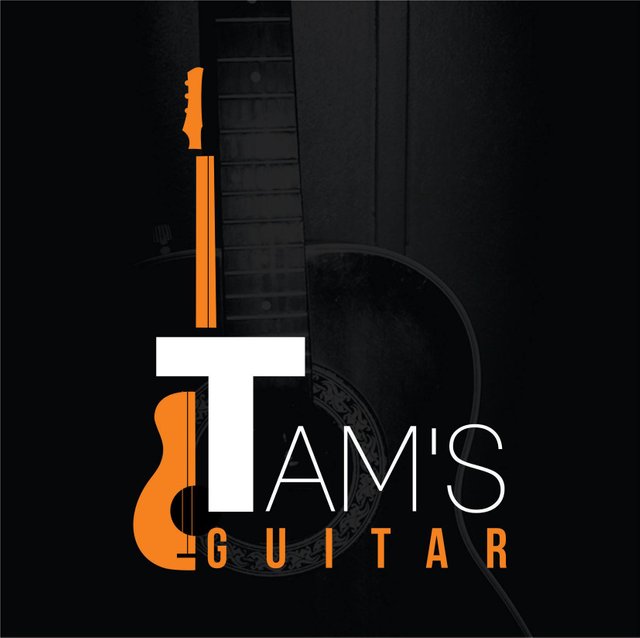Are Music and Mathematics related to each other ??
Hello dear steemians, People not associated with music may think how is it possible?? But if I tell you the music you have been listening to all you life is created mostly using only 7 notes of the 12 notes available (At least in western system) and everyday thousands of new songs are created. How is it possible??

Let's take a look at the fundamentals first
The most basic thing taught to a music student is a Major scale and they are eventually told that they can play songs if they can learn major scale properly. The major scale is more popularly known as Do Re Mi Fa ... The major scale has 7 notes only and tunes are formed by playing the notes in different permutations and combinations, these combinations are already infinite since you can repeat any note n number of times. And what makes it even more interesting is that you can play the same set of notes in different rhythmic patterns thus even you have only 4 notes in same sequence you can have infinite number of combinations. Isn't it interesting ??
A little technical details ( Easy to understand though )
What do you mean by notes ??
The term ‘note’ used in music carries multiple meanings. To start with we can simply think a note is a pitch of a sound or in a very basic way the sound you produce in guitar or any other instrument.
How many notes are there?
In western music we have 12 notes. These notes can repeat in different octaves meaning. The notes remain the same but the pitch varies.
How many and what are the notes??
The notes are named alphabetically. The letters from A to G are used for naming notes. With or without a # (sharp) except B & E all other notes have a sharp). Remember this. E.g. A, A#, B, C, C#, D, D#, E, F, F#, G, G#
Every sharp(#) has a corresponding flat(b) name. E.g.
A# has another name Bb (b read as flat) Same note having 2 names are termed as en-harmonic intervals. Like we have 2 or more names right ???

These images are taken from my book Guitar from scratch

This is how the notes on a guitar looks
The mathematical formula of how a scale is formed
The major scale is not formed by taking notes in any random order but it has a formula.
W-W-H-W-W-W-H or T-T-S-T-T-T-S or 1-1-1/2-1-1-1-1/2
W-Whole, T-Tone, H- Half or Half step and S - Semi tone
These are called intervals which denotes distance between two notes.
Example If two notes are next to each other or more precisely when they are consecutive they are termed as Half step (H) apart. E.g. A and A#, C and C#, D and D# are half step apart. This interval is also called Semi tone (S)
Similarly 2 halves make one thus example of Whole step or Tone are as follows.
A and B, C and D, F# and G# etc
So we can see how the notes are arranged in an order following a formula.
Now let us take the C major scale for example to understand the formula
C D(W) E(W) F(H) G(W) A(W) B(W) C(H)
Explanation from C a whole step (W) is D right?? and from D a whole step(W) is E and from E half step (H) is F and so on.
All scale notes.

Any idea about how Chords are formed ??? Are they random notes ??
This is another interesting topic. The chords too have a specific formula. The notes that form a major chord are 1 3 5 of the major scale and if we want to take a look at the respective minor chords then we need to just change the 3rd note to a flat 3rd (b3), thus minor chord formula is 1 b3 5 if we consider the major scale. In a scale if we take a look at the notes and form different groups following a particular order we get 7 chords since there are 7 notes and things might get a little complicated here but it's not rocket science anyway. This is called harmonized major scale
Harmonized major scale, the most important tool for a musician to create music
In a lay man's term the Harmonized scale is nothing but the number of chords present in a scale. At the moment we'll take C major scale for a better understanding. The easiest way for finding out notes to get the idea of harmonized scale is to make a group of three consecutive alternate notes, we have 7 notes in total thus we won't have more than 7 groups.
E.g.
Let us number the notes of C major scale C(1) D(2) E(3) F(4) G(5) A(6) B(7) C(8) 8 and 1 are technically same notes.
Group 1 - C(1) - E(3) - G(5) --- C major Chord
Group 2 - D(2) - F(4) - A (6) --- D minor chord
Group 3 - E(3) - G(5) - B(7) --- E minor chord
Group 4 - F(4) - A(6) - C(8) --- F major chord
Group 5 - G(5) - B(7) - D(2) ---G major chord
Group 6 - A(6) - C(8) - E(3) --- A minor chord
Group 7 - B(7) - D(2) - F(4) --- B diminished chord
Refer to the scale note chart and take a look at the C major scale for a better understanding.

These patterns are created using specific formulas that give us some valid results and we can generalize this even further to apply it for any scale to find out it's chords.
Nashville number system
When we number the notes of the scale using Roman numbers it represents the chords. These are called Nashville numbers.
So from the harmonized scale theory we can conclude in any scale
I chord is major
II chord is minor
III chord is minor
IV chord is major
V chord is major
VI chord is minor
VII chord is diminished
In short Harmonized C maj scale - C Dm Em F G Am Bdim
Now let's apply the same concept for G major scale
Let's number the notes first G(I) A(II) B(III) C(IV) D(V) E(VI) F#(VII)
Harmonized G major scale- G Am Bm C D Em F#dim
Is there any calculation required during composing music ??
In two ways one can approach music composition
i. Composing the melody before the accompaniment
ii.Composing the backing/ accompanying track before the melody.
i. By using the notes of the scale in different permutations and combinations with the help of proper rhythmic pattern one can create the melody. Creativity shouldn't be forgotten of course!
ii.Using the above concepts any one can create music by selecting a scale they want to compose in and then they can calculate the available notes and then figure out the harmonized scale and then use the chords according to their wish to create the backing/accompanying music. It's simpler than it seems. Since it's not Rocket Science.
More calculation for extended chords
We so far looked at the basic chord formation and now in order to get some exotic sound we have a bunch of scary looking chords with scary names. These names again have a logical background.
E.g. Major 7 chords are formed by adding the major 7th note i.e. the 7th note of a major scale with the major chord.
Thus the formula turns out to be
Maj7 chord --- 1 3 5 7 of major scale.
Isn't it fascinating??
Similarly there are a lot of extended chords and altered chords Cmaj9, E7#9, F#mb9 etc that have a formula which a musician needs to remember and need to calculate whether the scale he is composing in can technically have that specific chord.
This is just an introduction to make you understand the amount of calculations involved in music and it takes years of practice to understand and implement these ideas to one's playing.

If you like my post then feel free to up vote comment and even resteem and follow @tamsguitar.
If you are a beginner want to learn guitar click here

Well, if you go by the term Theory, yes it is related as Math has certain theories to solve problems, so has music a few(actually many). If you go by the term formula, yes it is related as you must need to know different formulas to resolve a problem just to solve it in a easy way. So as music, to improvise, you must know the scales, chord formulas, modes and all. As math has different formulas and sections like Arithmetic, algebra, geometry, trigonometry, calculus, same for music. Scales(12 scales mainly), modes(different mode has different purpose), genre ( rock, blues, metal, Jazz and many more) etc. As the problems are different between algebra and calculus, same as music. Dorian is a different flavor and at the same time Bebop is different and both sounds great but completely different feel. So this is very basic explanation I provided. Basically what I meant to say is yes, Logically both Math and Music are same as per my humble opinion.
Thanks!!!!!!
Tamal, any idea why the up vote dollars are decreasing every day?? I earned $16.88 from a post and now it has reduced to $14.82 . I'm fearing that by the pay out it will decrease may be $10.
People have a voting power and voting value (like $10 for example for a day ). The more they vote this value is distributed thus after voting your post they may have voted others as well thus it's becoming less and some other criterias are involved too which is not clear to me. So it'll increase also a little bit after a while.
interesting
You know I have been wondering about this because I listen to Lyndon LaRouche alot. He is into these connections. Now all is coming clear.
Great article.
@watchout2017
Domi
upvote/max/follow
Thank you!
Great information and helpful post....
Some theory. Thanks !!!
very informative! Thanks for sharing ! Upped!👍👍👍
Thank you !!!!!!
your welcome!